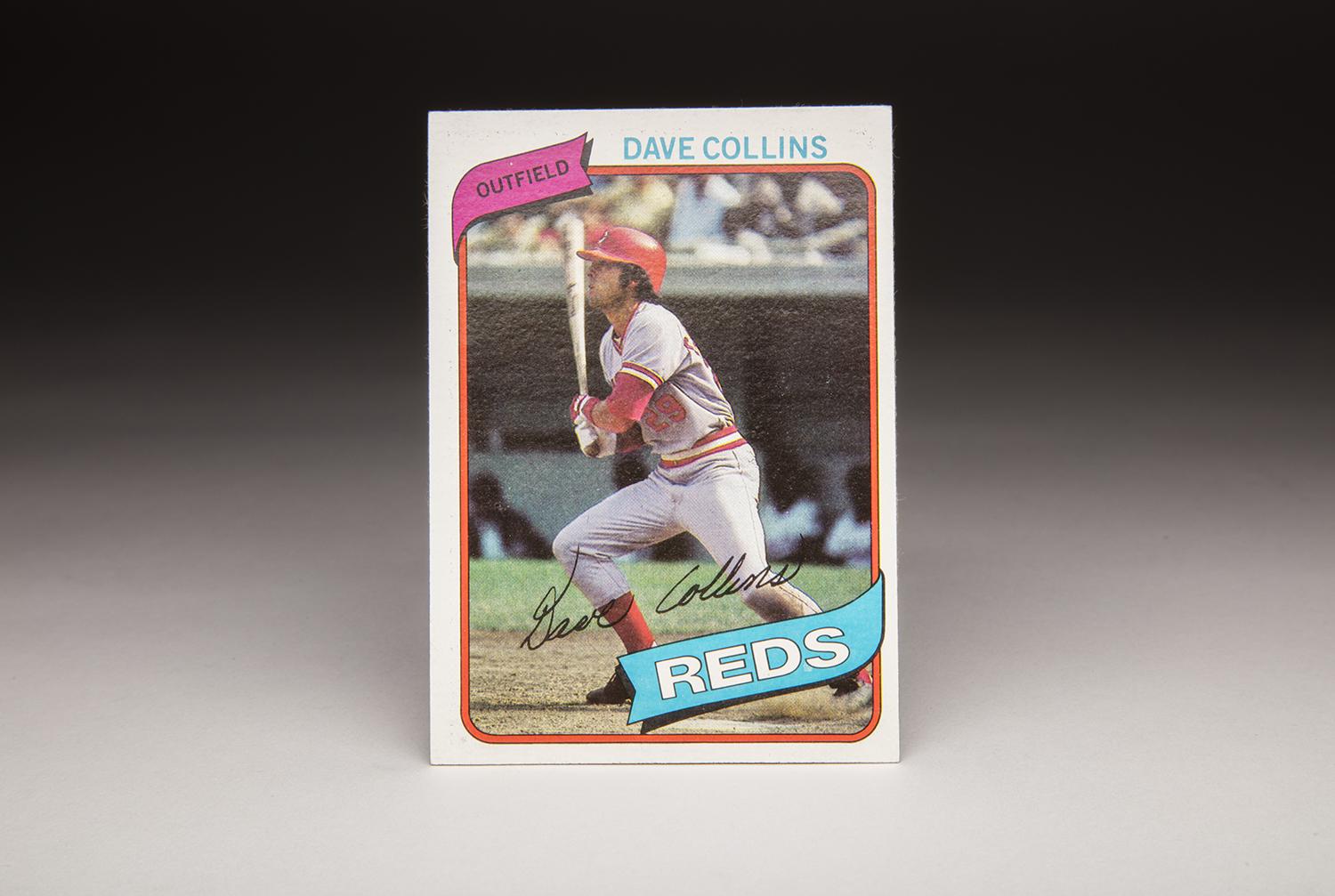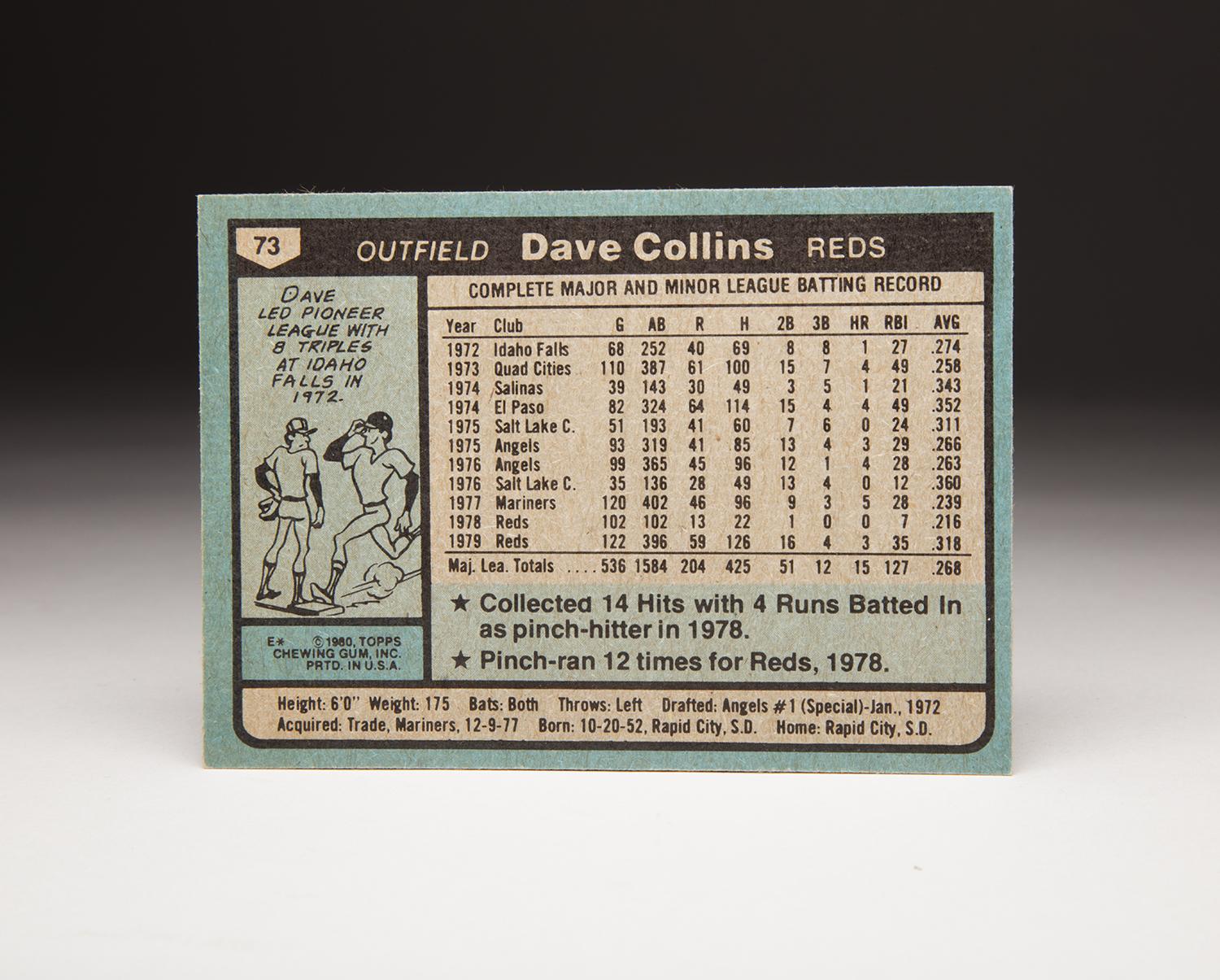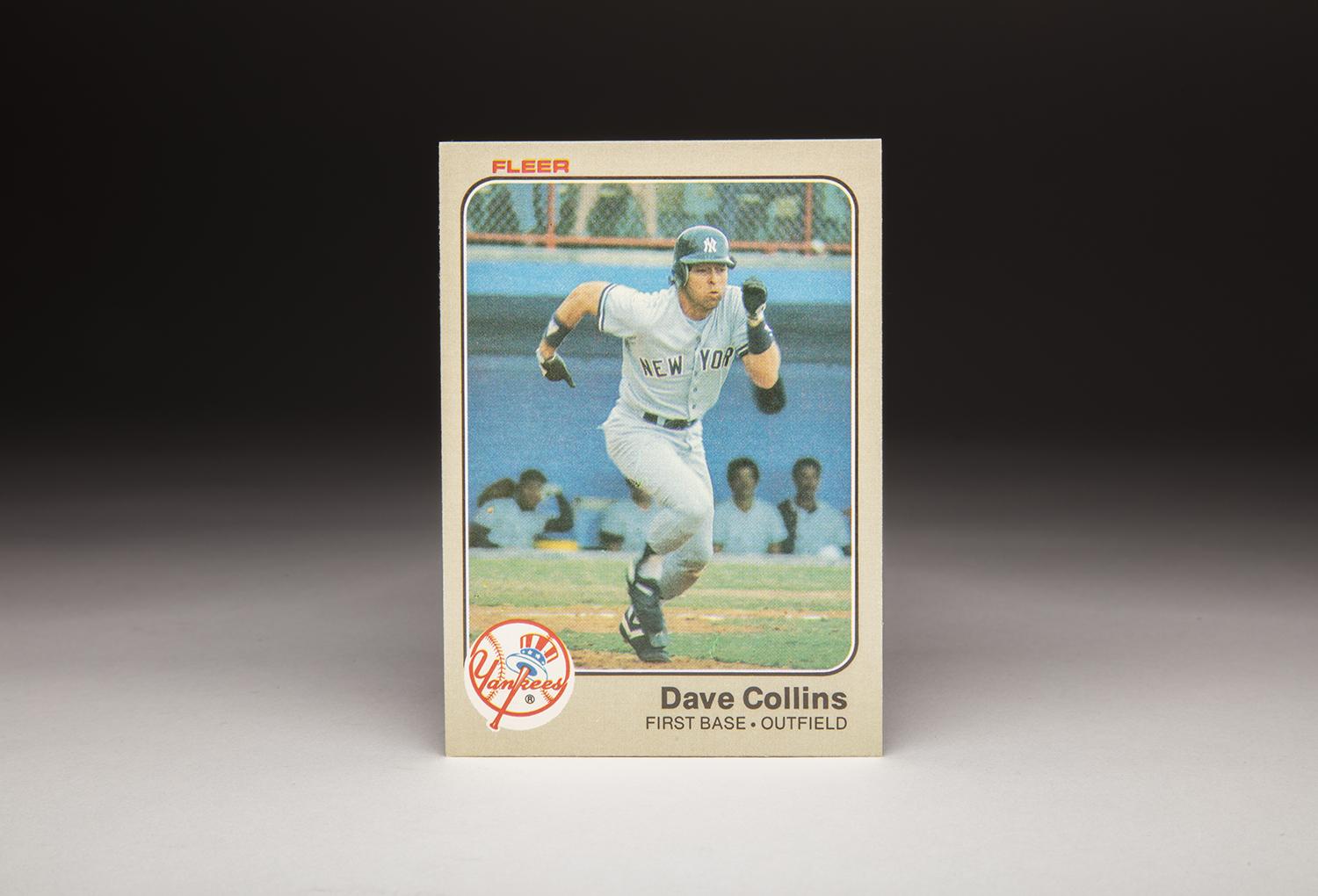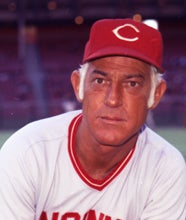- Home
- Our Stories
- #CardCorner: 1980 Topps and 1983 Fleer Dave Collins
#CardCorner: 1980 Topps and 1983 Fleer Dave Collins
Hall of Fame staffers are also baseball fans and love to share their stories. Here is a fan's perspective from Cooperstown.
As we look back at baseball cards from years ago, we occasionally stumble upon cards that just seem so fitting for the player they depict. In the case of Dave Collins, I found two. Both his 1980 Topps card and his 1983 Fleer card capture the dynamic style of player that made him one of my favorites back in the early 1980s.
Let’s begin with the 1980 Topps card. It’s a wonderful set to begin with, thanks to a clean layout that took the basic design from the 1974 set and put it on a diagonal slant. 1980 Topps features plenty of good action photography, including this shot of Collins playing for the Cincinnati Reds in a game at Shea Stadium. Collins had his best years for the Reds, where he established his reputation as a full-charging, hard-hitting speedster who played the game with dynamic tension. Here Collins has just finished his swing, both of his hands still gripping the bat, his legs coiled and ready to begin his run toward first base. He just looks like a good athlete here, well-balanced after taking a full swing.
The 1983 card from Fleer is a little bit different. Here we see Collins wearing the road gray colors of his newest team, the New York Yankees, who gave him a major free agent contract after the 1981 season. This photo appears to have been taken during a Spring Training game. Having just put the ball into play, Collins is breathing hard and pumping his arms as he charges toward first base. It’s exactly the way that I remember Collins. A hustling pepperpot of a ballplayer, Collins never jogged to first base. At least I never saw him do so. He always ran hard, always played the game as if it carried the importance of a World Series game. Even spring exhibition games represented serious business for a maximum-effort professional like Collins.
Collins’ success, first achieved in Cincinnati and rewarded with a huge pay day in New York, did not come easily or quickly. Back in 1972, the California Angels made him the sixth overall pick of the amateur draft, an indication of his athletic talent. In particular, Collins’ speed drew the attention of scouts, who noted his time of 9.6 seconds in the 100-yard dash.
As an outfielder/first baseman, Collins put up some gaudy stolen base totals and batting averages in the Angels’ minor league system, earning himself a promotion to Anaheim by the 1975 season. During his rookie season, Collins earned an important lesson. One day in batting practice, Collins decided he would try to hit a few home runs, which was clearly not his game. Observing Collins from the sidelines, Angels coach Grover Resinger berated the rookie outfielder. According to manager Dick Williams’ autobiography, No More Mr. Nice Guy, Resinger yelled at Collins “so loud and so long that Collins began crying.” In later years, Collins would often refer to the shakedown he received from Resinger as one of the most important learning points of his career.
In the short term, Collins didn’t hit much higher than the .260 range in his early trials with California. He also struggled with his basestealing technique, resulting in more “caught stealings” than the Angels would have preferred. Defensively, Collins lacked much of a throwing arm, making him something of a liability in the outfield.
Frankly, the Angels were disappointed in Collins. Even with some holes in their starting outfield, they left him unprotected in the expansion draft. The Seattle Mariners, one of the two new clubs set to enter the American League in 1977, selected Collins with the 14th pick of the draft.
The Mariners made Collins their Opening Day DH in their inaugural season. They also used him as a left fielder, but he failed to hit much: a .239 batting average with only 33 walks. His basestealing also left something to be desired; he stole 25 bases but was caught 10 times.
At the 1977 Winter Meetings, the Mariners peddled Collins. They traded him to the Reds for a young pitching prospect, Shane Rawley, who would eventually become a top-flight reliever in Seattle. The Reds viewed Collins as a fourth outfielder, someone who could back up their talented starting trio of George Foster, Cesar Geronimo, and Ken Griffey, Sr.
At Spring Training in 1978, Collins’ batting style horrified the Reds’ batting coach, Ted Kluszewski. “The first time I saw Dave, I thought, ‘That has to be the worst looking hitter I’ve ever seen.’ His swing is so short, I couldn’t see how he could hit the ball.”
“Klu” decided to equip Collins with a larger bat and encourage him to become a ground ball hitter by swinging down on pitches. The new approached produced subpar results. Collins played sporadically, coming to bat 102 times and hitting .216. His basestealing, with a success rate of only 50 percent, wasn’t much better.
In 1979, Collins changed the approach. He opted for a lighter bat, thereby increasing his bat speed. Collins responded with a robust batting average of .318 and an on-base percentage of .364. He also benefited from additional playing time, as Foster, Geronimo and Griffey all missed time with injuries. In the National League Championship Series, Collins elevated his game further, hitting .357 against the Pittsburgh Pirates. At 26 years of age, Collins had arrived as a major league contributor.
Based on his 1979 performance, the Reds gave Collins a chance to win the center field job over the aging Geronimo. Collins had little experience in center, but worked hard during the spring with Jim Beauchamp, the former major league outfielder who was managing the Reds’ Triple-A affiliate at Indianapolis. Willing to do whatever Beauchamp said, Collins won the job in 1980.
Collins again hit over .300 (.303), but his game on the bases exploded. He stole 79 bases, placing himself among the league leaders. He also showed increased patience at the plate; with 53 walks, he lifted his on-base percentage to .366. Collins became one of the most exciting players in the National League, as he smacked line drives into the outfield gaps, and regularly extended singles into doubles, and doubles intro triples.
Collins’ performance fell off somewhat during the strike-interrupted season of 1981. His batting average dropped to .271 and his stolen base efficiency also plummeted, as he swiped only 26 bases while being caught 10 times. It happened to be his walk year; but the Yankees were impressed enough by Collins, even with reduced production, to offer him a three-year deal worth $2.75 million.
For Collins, it was the fulfillment of a dream. Yes, the money was terrific, but he had also grown up as a fan of the Yankees while living in South Dakota. “Toronto made me a better offer and Kansas City was interested,” Collins told Yankee beat writer Moss Klein, “but I wanted to play for the Yankees.”
With the signing of both Collins and Griffey, another ex-Red, the Yankees planned to transform themselves into the “Bronx Burners,” emphasizing a National League style predicated on line-drive hitting and basestealing. The plan, conceived by owner George Steinbrenner, never really came to fruition. The Yankees employed three managers that summer (Bob Lemon, Gene “Stick” Michael, and Clyde King), but none of them allowed the running game to take effect. Collins did not feel encouraged to run in New York like he did in Cincinnati. He also missed the artificial turf of Riverfront Stadium.
To complicate matters further, the Yankees struggled to find a regular place for Collins in the lineup. They had promised to play him at first base, the position that he felt most comfortable at but one that had been blocked by Dan Driessen in Cincinnati. Instead, the Yankees shifted Collins between first base and the outfield corners. When Collins, who was all of five feet, 11 inches tall, started taking grounders at first base in the spring, a teammate snidely remarked that he would need to play first base while “standing on top of a phone book” in order to reach throws from the infielders. It was a great line, but didn’t reflect Collins’ true skill in handling the position.
In many ways, Collins came to symbolize the wild comings and goings of the 1982. Admired by beat writers like Klein and Bill Madden for his mild-mannered and even-keeled demeanor, Collins and his plight became the subject of a chapter in the book, Damned Yankees. Madden and Klein wrote about how Collins (whom they fondly referred to as Davey Collins) watched in bewilderment as the Yankees plowed through three skippers, five pitching coaches, and three batting coaches in one season. With a glut of outfielders and first basemen, Collins never knew on a given day where he would play, or if he would play at all. Surrounded by a whirlwind of craziness, Collins did his best to remain calm and sane.
Appearing sporadically in 111 game, Collins batted only .253 and stole a mere 13 bases. Simply put, he was a square peg trying to fit into a circular hole created by Steinbrenner. After the season, the Yankees acknowledged their mistake by trading Collins and a young Fred McGriff to the Toronto Blue Jays for reliever Dale Murray. Given McGriff’s future success, it might have been the worst trade of the decade for the Yankees franchise.
Collins benefited from the move to Toronto. With the Jays, Collins found more of a comfort zone, especially when it came to playing on the fast artificial turf of Exhibition Stadium. In 1984, a rejuvenated Collins became the everyday left fielder in Toronto, hit .308, stole 60 bases, and led the league with 15 triples. He compiled an OPS of .811, better even than his prime years with the Reds.
As well as Collins played for Toronto, he became expendable that winter. Desperate for a closer, the Jays traded him to the Oakland A’s for hard-throwing right-hander Bill Caudill. The A’s used Collins in left field, but he eventually lost the job to an aging Dusty Baker. So Collins asked to be traded. To make matters worse, the Oakland Coliseum, with its natural grass and expansive foul territory, did not play to Collins’ strengths. He batted only .251 with 29 stolen bases.
After the season, the A’s complied with Collins’ trade request. They dealt him to Detroit for former top prospect Barbaro Garbey. The trade intrigued Collins because it reunited him with Tigers skipper Sparky Anderson, who had been his manager with the Reds in 1978. Collins played competently as a utility outfielder with Detroit, but still drew his release at season’s end. At 33 years old, Collins faced another crossroads in his well-traveled career.
That winter, Collins received a contract offer from the Montreal Expos. He reported to Spring Training, but failed to make the Opening Day roster, instead drawing his release. In June, one of his former teams came calling. The Reds offered him a contract and a role as a backup outfielder. Collins took the offer and batted well over the balance of the season, but his hitting tailed off the next two seasons. In June of 1989, the Reds gave the aging Collins his release.
Collins signed on with the St. Louis Cardinals as a backup outfielder but didn’t hit much in 99 games. In October of 1990, he announced his retirement. At 37, Collins had extracted as much from his body and his playing skills as he could.
Given his intelligence and work ethic, it only made sense that Collins would pursue a career in coaching. As a coach, he has put in time with the Colorado Rockies and Milwaukee Brewers, but seemed to have his biggest impact with the Florida Marlins. Although his job title officially listed him as Florida’s first base coach, he took on extra, unofficial duty as a mentor to young players on the Marlins. He became a favorite with Marlins players for his special sayings, like “Plant grass, don’t pull weeds.”
During the first day of Spring Training in 2010, Collins gave a memorable clubhouse speech that is still talked about today within the organization. “We hadn’t even met him yet,” Marlins outfielder Cody Ross told the Miami Herald, “but after he gave that speech, I wanted to run through a wall.”
Running through a wall. That is something that Collins willingly did during his playing career. While he has experienced his share of hardships and address changes along the way, Dave Collins has never stopped hustling.
Bruce Markusen is the manager of digital and outreach learning at the National Baseball Hall of Fame
Related Stories
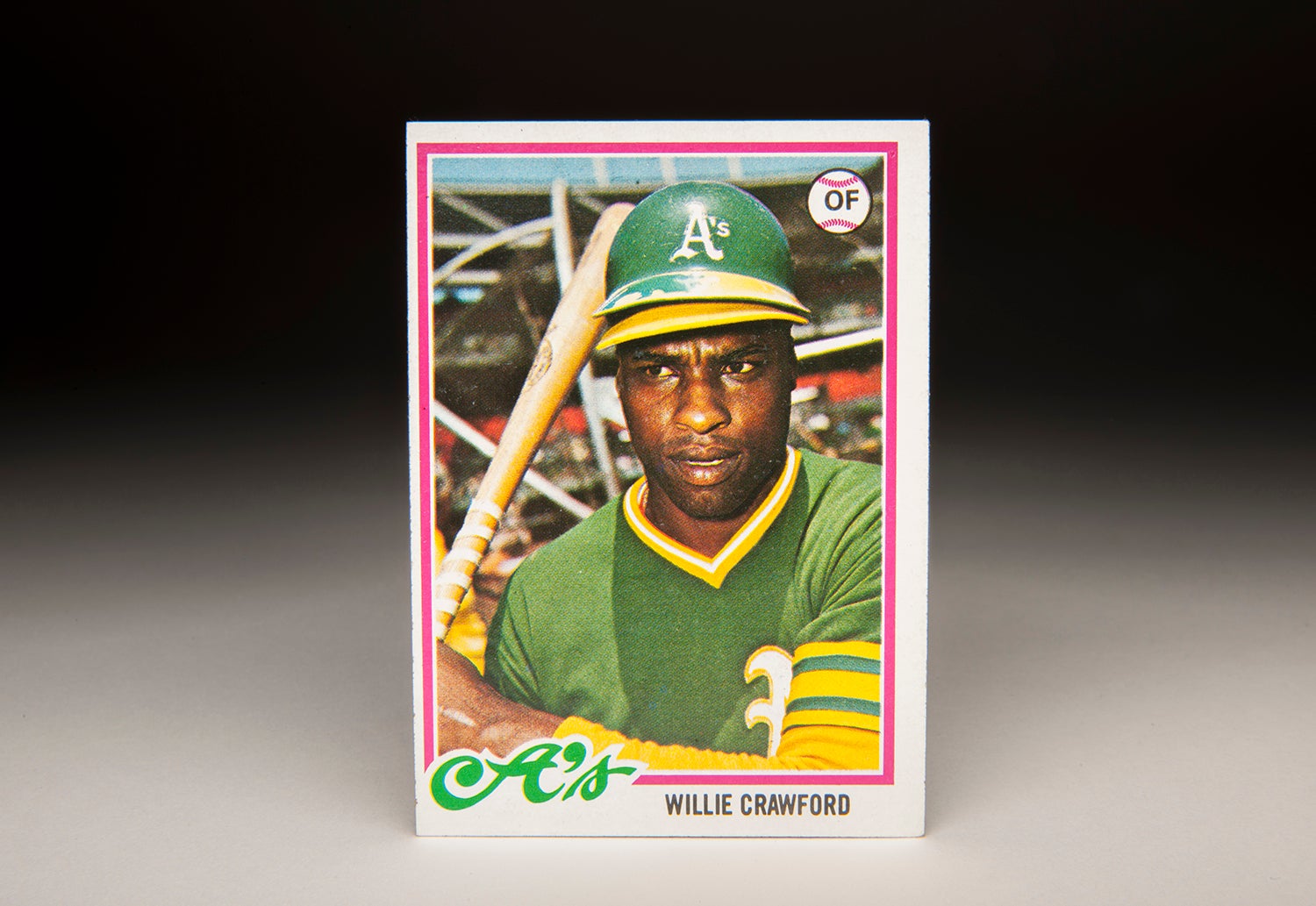
#CardCorner: 1978 Topps Willie Crawford
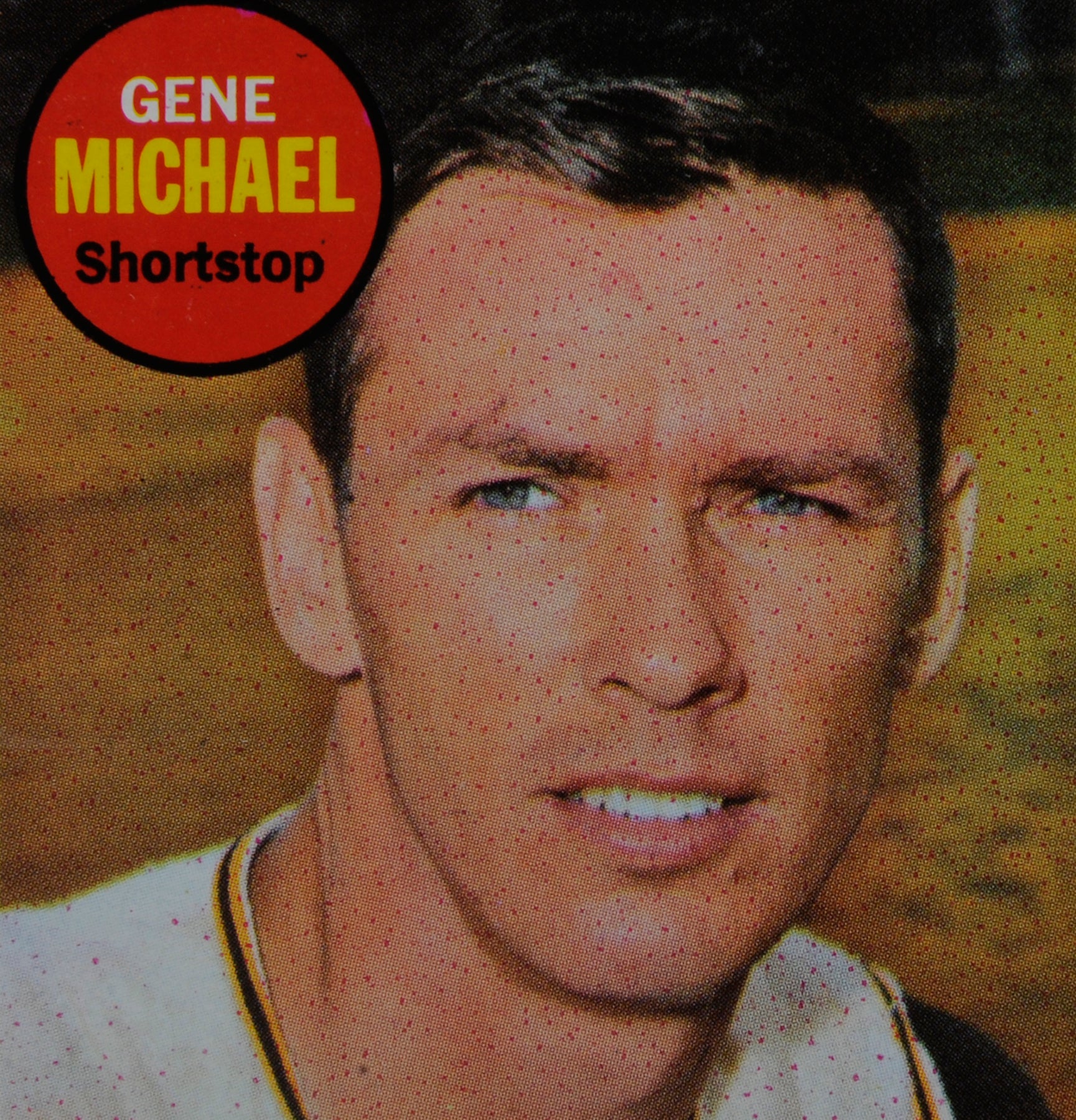
#CardCorner: 1969 Topps Gene Michael
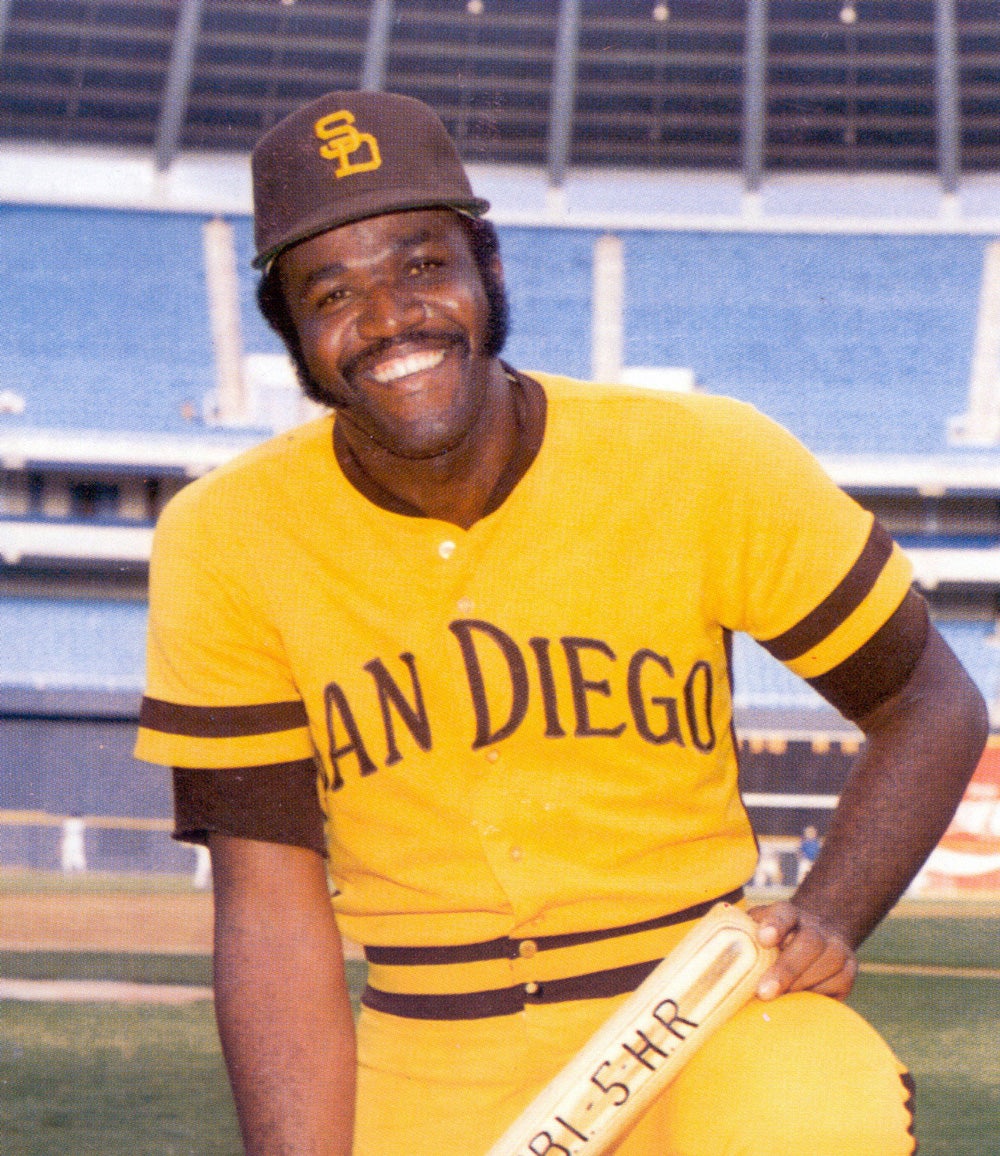
#CardCorner: 1969 Topps Nate Colbert
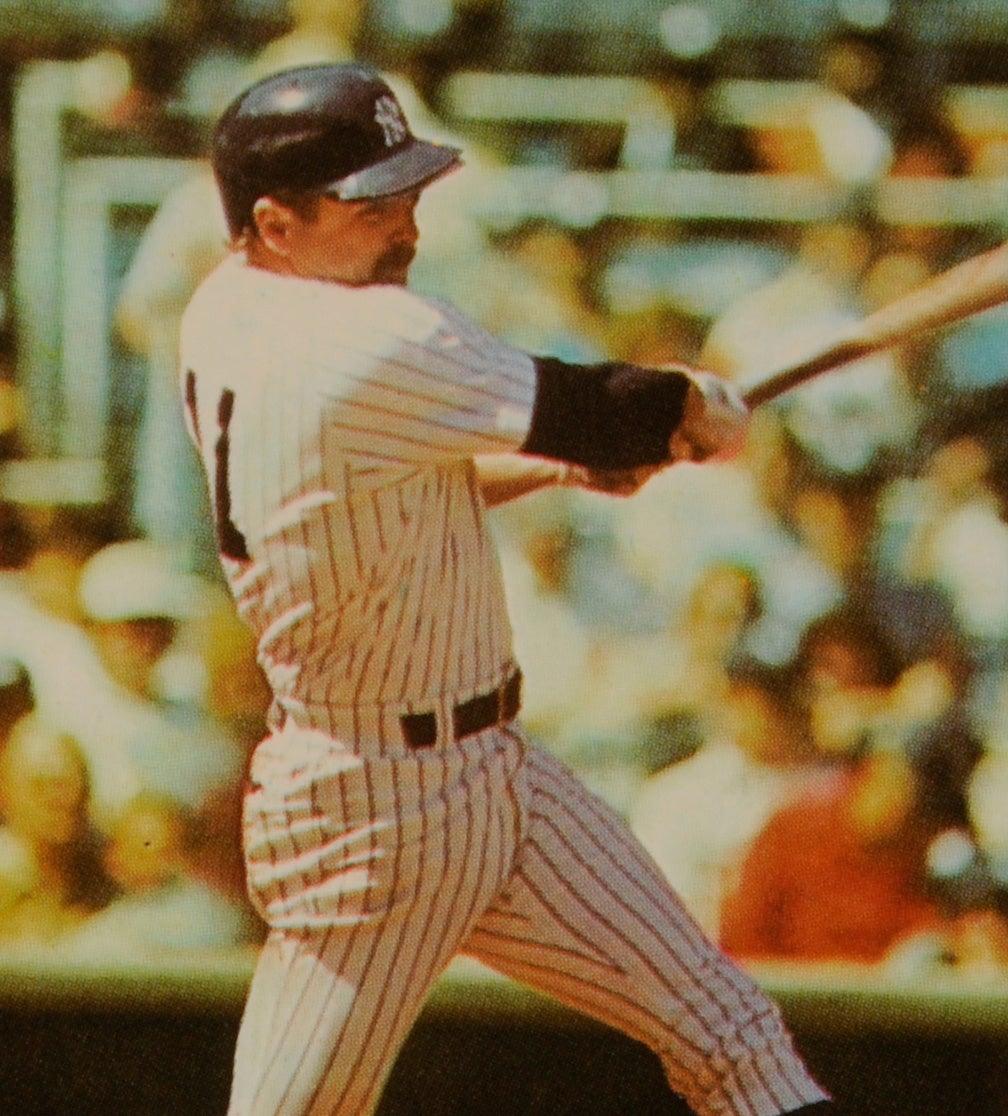
#CardCorner: 1984 Topps Toby Harrah

#CardCorner: 1978 Topps Willie Crawford

#CardCorner: 1969 Topps Gene Michael

#CardCorner: 1969 Topps Nate Colbert


